
Birth of the U.S. Marine Corps on November 10, 1775
Birth of the U.S. Marine Corps: During the American Revolution, the TENTH day of November of 1775 became the birth of the United States Marine Corps as the Continental Congress authorized the raising of two battalions of marines for service as landing forces for the recently formed Continental Navy for the defense of the colonies which were then to protect their rights, as they saw them, against the aggressions of the mother country.
The resolution, drafted by future U.S. president John Adams and adopted in Philadelphia, created the Continental Marines.
The men recruited for this force were to be familiar life of the sea, but were to be trained as a military force, and was the intention to have them serve aboard the ships to be provided for the defense of the colonies. It is evident that the founders of the Marine Corps had in mind the fine services previously rendered by the British marines, both afloat and ashore, and that it was the intention to use the marines aboard the ships in naval battles when on the high seas and as landing forces when occasion might offer.
From that distant date down to the present day the United States Marines have continued to serve as an integral part of the United States Navy and in peace and war have proved the military army of the Navy. In all of the wars in United States have engaged the marines have played their part according to their abilities and the occasions offered, and how well this part has been played is amply testified to in the many reports of the admirals who have commanded our squadrons on the seven seas throughout the 150 years that have looked down upon the organization and growth of our nation.
There is neither space nor inclination to give here even passing note of the incidents that have contributed to the pages of history due to the acts of the Marine Corps; but it appears to be proper to state here the present-day mission of the corps which derived from the experiences of a century and a half of service in the Navy and to call attention to what has been done in recent times to fit the corps to meet in a creditable and efficient the requirements of the mission assigned to it by the highest authority in control of the military and naval destinies of the nation.
The mission of the Marine Corps, briefly stated, is:
“To support the fleet, or any part thereof, in the accomplishment of its mission.”
The principal mission of the Navy as a whole may be briefly stated, in the language of the great Mahan:
“To gain command of the sea and hold it.”
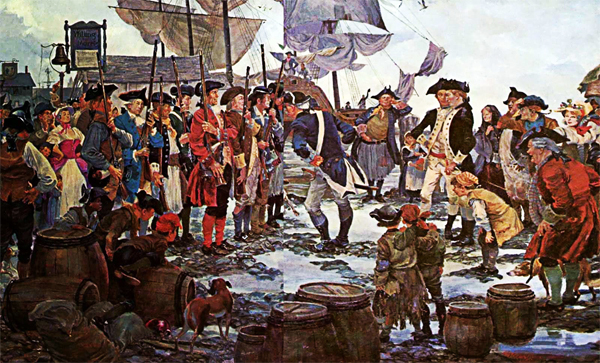
Continued ...
U.S. Naval History Institute.org / Wikipedia / Encyclopedia Britannica /
History.com / Military.com / Marine Corps University.edu /
Birth of the U.S. Marine Corps on November 10, 1775 (YouTube) 
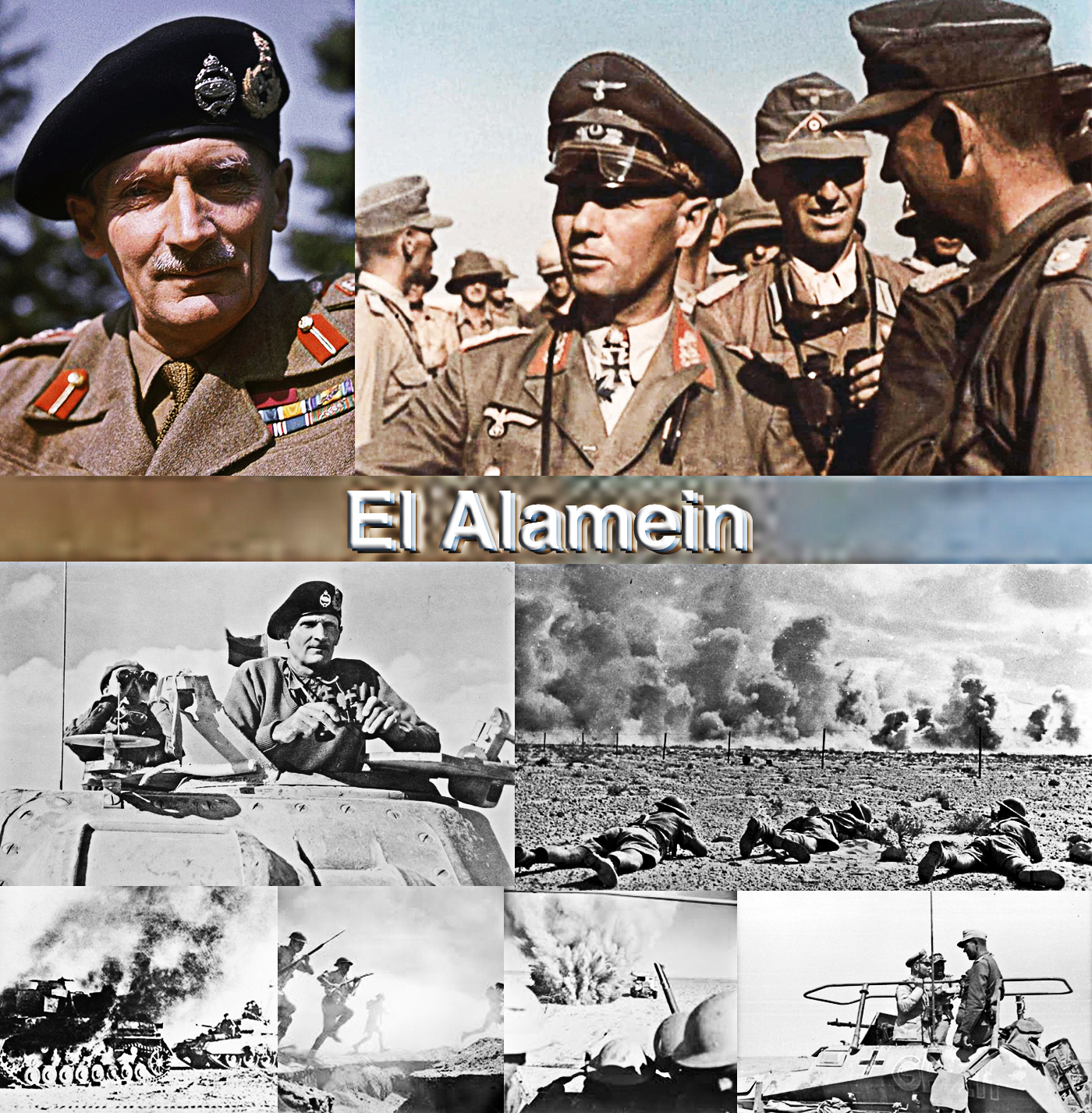
Second Battle of El Alamein: General Field Marshal Erwin Rommel begins a retreat of his forces after a costly defeat on November 04, 1942
Second Battle of El Alamein: General Field Marshal Erwin Rommel begins a retreat of his forces after a costly defeat: Fought near the western frontier of Egypt between October 23, and November 04, 1942, El Alamein was the climax and turning point of the North African campaign of World War Two (1939-45). The Axis army of Italy and Germany suffered a decisive defeat by the British Eighth Army.
On November 2nd, Operation Supercharge was launched at El Alamein, Egypt, destroying many Axis tanks and guns. Axis tanks counterattacked at 1100 hours, which failed to stop the Allied advances. During the night, Rommel requested permission from Hitler to fall back, which was denied on the next day.
On November 4th, Disobeying a direct order by Adolf Hitler, General Field Marshal Erwin Rommel begins a retreat of his forces after a costly defeat - The retreat would ultimately last five months.
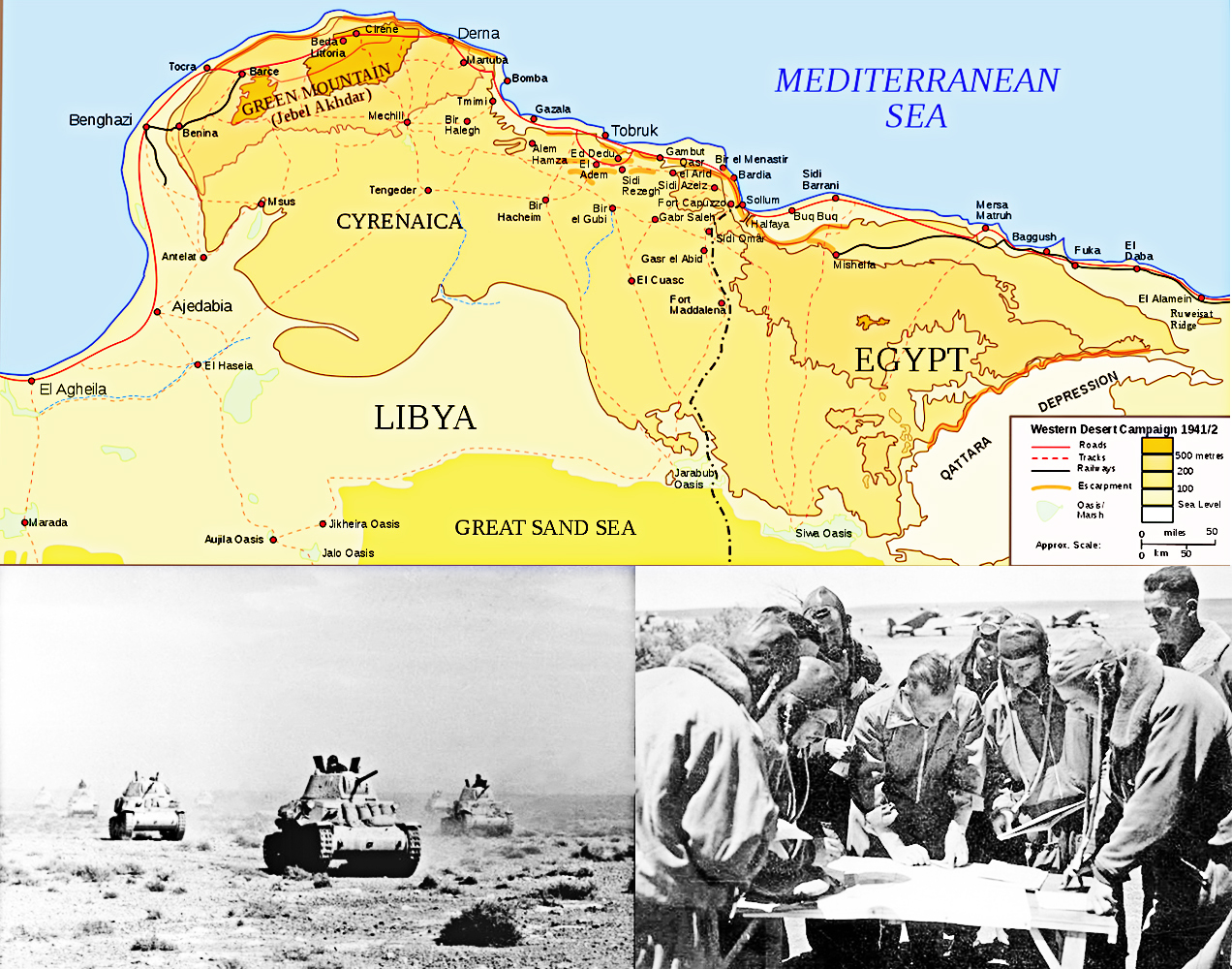
Continued ...
National Army Museum / Wikipedia / Encyclopedia Britannica /
History Channel / Imperial War Museum (Great Britain) / World War II Database /
Second Battle of El Alamein: General Field Marshal Erwin Rommel begins a retreat of his forces after a costly defeat on November 04, 1942 (YouTube) 

Understanding Military Terminology
Raid
(DOD) An operation to temporarily seize an area in order to secure information, confuse anadversary, capture personnel or equipment, or to destroy a capability culminating with aplanned withdrawal.
Joint Publications (JP 3-0) Joint Operations
Railhead
(DOD) A point on a railway where loads are transferred between trains and other meansof transport.
Joint Publications (JP 4-09) Distribution Operations
Rangers
(DOD) Rapidly deployable airborne light infantry organized and trained to conducthighly complex joint direct action operations in coordination with or in support of otherspecial operations units of all Services.
Joint Publications (JP 3-05) Special Operations
Rapid Global Mobility
(DOD) The timely movement, positioning, and sustainment of military forces and capabilities across the range of military operations.
See also Mobility.
Joint Publications (JP 3-17) Air Mobility Operations
Joint Publication - Department of Defense Dictionary of Military and Associated Terms
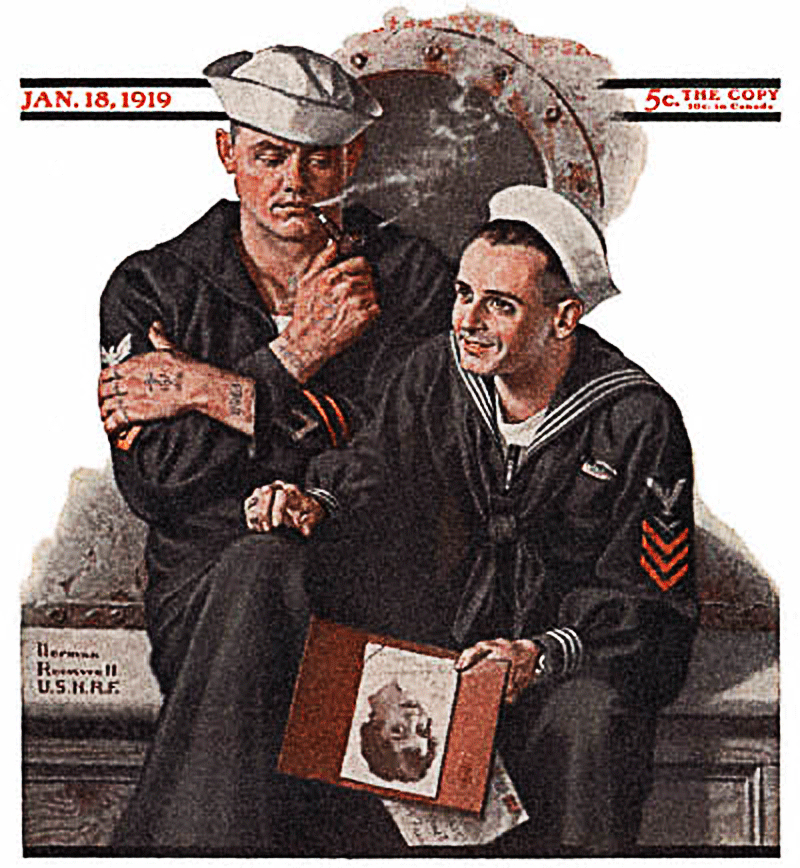
The Old Salt’s Corner
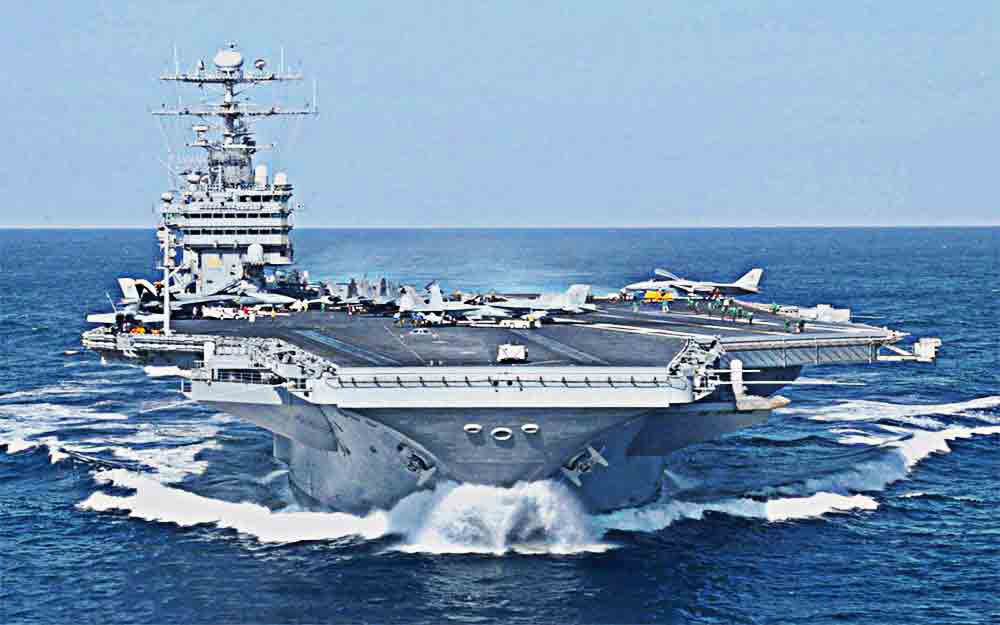
A limber hole is a drain hole through a frame or other structural member of a boat designed to prevent water from accumulating against one side of the frame, and allowing it to drain toward the bilge.
Limber holes are common in the bilges of wooden boats.
The term may be extended to cover drain holes in floors.
Limber holes are created in between bulkheads so that one compartment does not fill with water.
The limber holes allow water to drain into the lowest part of the bilge so that it can be pumped out by a single bilge pump (or more usually, one electric and one manual pump).
The term is commonly applied to the holes in mid-20th century submarine upperworks, which allow drainage from the superstructure.

“I’m Just Sayin”
“I firmly believe that a story is only as good as the villain.”
“Nothing ever begins.
There is no first moment;
no single word or place from which this or any other story springs.”
“Superman is,
after all,
an alien life form.
He's simply the acceptable face of invading realities.”
“We actually say in ‘Nightbreed’,
‘God is an astronaut,
Oz is over the rainbow,
and Midian is where the monsters go.’
There's a lovely sense in which there's a simple thesis being played out here.
These are things you understand as a child out on the play yard.”
~ Clive Barker

“Thought for the Day”
“The only thing necessary for the triumph of evil is for good men to do nothing.”
“All tyranny needs to gain a foothold is for people of good conscience to remain silent.”
“Nobody made a greater mistake than he who did nothing because he could do only a little.”
“You can never plan the future by the past.”
“To read without reflecting is like eating without digesting.”
“No passion so effectually robs the mind of all its powers of acting and reasoning as fear.”
“Beauty is the promise of happiness.”
“The greater the power,
the more dangerous the abuse.”
“When bad men combine,
the good must associate;
else they will fall one by one,
an unpitied sacrifice in a contemptible struggle.”
~ Edmund Burke

“What I Learned”
“The tree of liberty must be refreshed from time to time with the blood of patriots and tyrants.”
“The man who reads nothing at all is better educated than the man who reads nothing but newspapers.”
“I like the dreams of the future better than the history of the past.”
“I tremble for my country when I reflect that God is just;
that his justice cannot sleep forever.
“Nothing can stop the man with the right mental attitude from achieving his goal;
nothing on earth can help the man with the wrong mental attitude.”
“When angry count to ten before you speak.
If very angry, count to one hundred.”
“In matters of style,
swim with the current;
In matters of principle, stand like a rock.”
“Question with boldness even the existence of a God;
because,
if there be one,
he must more approve of the homage of reason,
than that of blind-folded fear.
“We hold these truths to be self-evident:
that all men are created equal;
that they are endowed by their Creator with certain unalienable rights;
that among these are life,
liberty,
and the pursuit of happiness.”
~ Thomas Jefferson
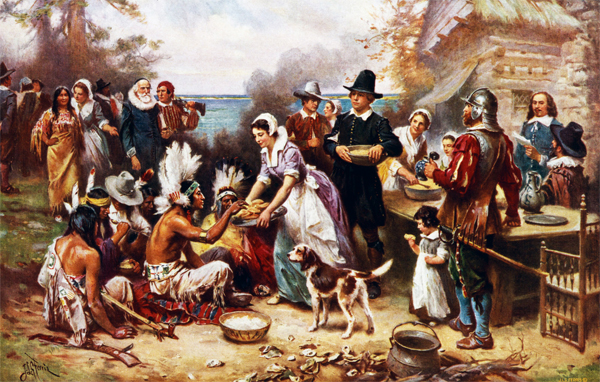
Mr. Answer Man Please Tell Us: The History of Thanksgiving in the United States
The true story behind Thanksgiving is a bloody struggle that decimated the population and ended with a head on a stick
• Most American schoolchildren grow up with the story of how the English pilgrims and Native Americans came together for the first Thanksgiving in Plymouth.
• In reality, peace didn't last between the English settlers and their one-time Wampanoag allies.
• The two became embroiled in a devastating war just a generation after the famous feast.

In the United States, Thanksgiving is a time for family, parades, lots of delicious food, and, oftentimes, intense travel snarls.
American schoolchildren are usually taught the tradition dates back to the pilgrims, English religious dissenters who helped to establish the Plymouth Colony in present-day Massachusetts in 1620.
As the story goes, friendly local Native Americans swooped in to teach the struggling colonists how to survive in the New World. Then everyone got together to celebrate with a feast in 1621. Attendees included at least 90 men from the Wampanoag tribe and the 50 or so surviving Mayflower passengers, according to TIME. The bash lasted three days and featured a menu including deer, fowl, and corn, according to Smithsonian Magazine.
In reality, Thanksgiving feasts predate Plymouth. You'll even find a number of localities have vied to claim the first Thanksgiving for themselves.
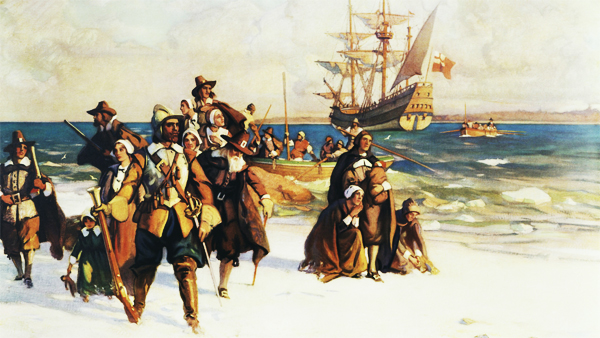
Settlers in Berkeley Hundred in Virginia decided to celebrate their arrival with an annual Thanksgiving back in 1619, according to The Virginian-Pilot - although The Washingtonian reported the meal was probably little more than some oysters and ham thrown together. And decades before that, Spanish settlers and members of the Seloy tribe broke bread with salted pork, garbanzo beans, and a Mass in 1565 Florida, according to the National Parks Service.
Our modern definition of Thanksgiving revolves around eating turkey, but in past centuries it was more of an occasion for religious observance. The storied 1621 Plymouth festivities live on in popular memory, but the pilgrims themselves would have likely considered their sober 1623 day of prayer the first true “Thanksgiving”, according to the History of Massachusetts Blog. Others pinpoint 1637 as the true origin of Thanksgiving, owing to the fact Massachusetts colony governor John Winthrop declared a day of thanks-giving to celebrate colonial soldiers who had just slaughtered 700 Pequot men, women, and children in what is now Mystic, Connecticut.
Either way, the popular telling of the initial harvest festival is what lived on, thanks to Abraham Lincoln.
The enduring holiday has also nearly erased from our collective memory what happened between the Wampanoag and the English a generation later.
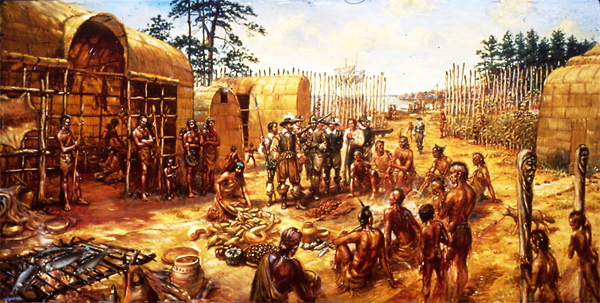
Massosoit, the sachem or paramount chief of the Wampanoag, proved to be a crucial ally to the English settlers in the years following the establishment of Plymouth. He set up an exclusive trade pact with the newcomers, and allied with them against the French and other local tribes like the Narragansetts and Massachusetts.
However, the alliance became strained overtime.
Thousands of English colonists poured into the region throughout the 17th century. According to National Parks Service “Historic Contact: Early Relations between Indian People and Colonists in Northeastern North America”, authorities in Plymouth began asserting control over most aspects of Wampanoag life”, as settlers increasingly ate up more land. Estimated disease had already reduced the Native American population in New England by as much as 90% from 1616 to 1619, and indigenous people continued to die from what the colonists called “Indian fever”.
By the time Massasoit's son Metacomet - known to the English as “King Philip” - inherited leadership, relations had frayed. King Phillip's War was sparked when several of Metacomet's men were executed for the murder of Punkapoag interpreter and Christian convert John Sassamon.
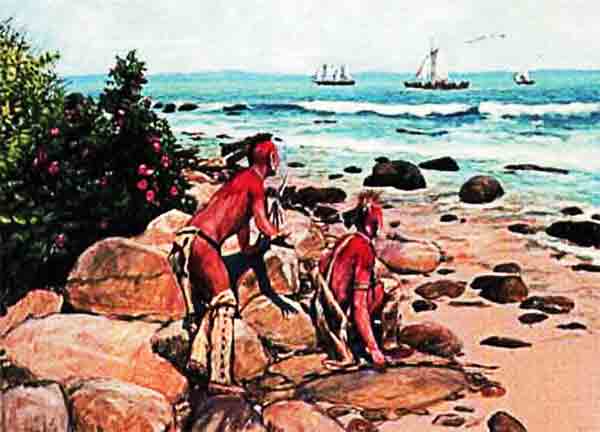
Wampanoag warriors responded by embarking on a series of raids, and the New England Confederation of Colonies declared war in 1675. The initially neutral Colony of Rhode Island and Providence Plantations was ultimately dragged into the fighting, as were other nearby tribes like the Narragansetts.
The war was bloody and devastating.
Springfield, Massachusetts was burned to the ground. The Wampanoag abducted colonists for ransom. English forces attacked the Narragansetts on a bitter, frozen swamp for harboring fleeing Wampanoag. Six hundred Narragansetts were killed, and the tribe's winter stores were ruined. Colonists in far flung settlements relocated to more fortified areas while the Wampanoag and allied tribes were forced to flee their villages.
The colonists ultimately allied with several tribes like the Mohigans and Pequots, despite initial reluctance from the Plymouth leadership.
Meanwhile, Metacomet was dealt a staggering blow when he crossed over into New York to recruit allies. Instead, he was rebuffed and attacked by Mohawks. Upon his return to his ancestral home at Mount Hope, he was shot and killed in a final battle. The son of the man who had sustained and celebrated with the Plymouth Colony was then beheaded and dismembered. His remaining allies were killed or sold into slavery in the West Indies. The colonists impaled “King Phillip's” head on a spike and displayed it in Plymouth for 25 years.
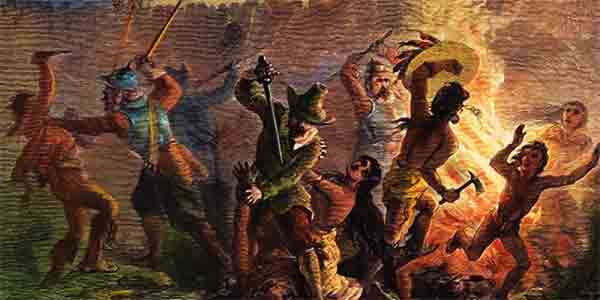
In an article published in “The Historical Journal of Massachusetts”, Montclair State University professor Robert E. Cray Jr. said the war's ultimate death toll could have been as high as 30% of the English population and half of the Native Americans in New England.
The war was just one of a series of brutal but dimly remembered early colonial wars between Native Americans and colonists that occurred in New England, New York, and Virginia.
Popular memory has largely clung to the innocuous image of a harvest celebration, while ignoring the deadly forces that would ultimately drive apart the descendants of the guests of that very feast.
Modern day Thanksgiving may be a celebration of people coming together, but that's not the whole story when it comes to the history of the day.
Business Insider / Wikipedia / Encyclopedia Britannica /
History Channel / Plimoth.org / Quora / Smithsonian / Thanksgiving /
The History of Thanksgiving in the United States (YouTube) 

NAVSPEAK aka U.S. Navy Slang
Target (Submarine Service): Term to describe any ship or boat on the surface.
Tattoo: FIVE minutes before TAPS.
TDU (Submarine Service): Trash Disposal Unit. Sophisticated AN-DEEP-6 weapons system.
The Boat: Airdale term for the ship their airwing is attached to. “We're going to The Boat for a few weeks.”
The Hole: Main machinery space where an engineer works. “What do you do onboard?” “I work in The Hole.” Also “The Pit.”
Wiktionary.org

Just for you MARINE
Terminal Lance: Marine nearing the end of his enlistment at the rank of Lance Corporal and unlikely to get promoted; also a webcomic of the same name. Also referred to as Lance Colonel.
Terp: An interpreter.
The Rock: Okinawa.
Wikipedia.org
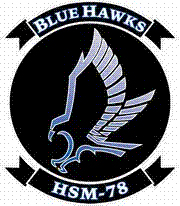
Naval Aviation Squadron Nicknames
HSM-78 Helicopter Maritime Strike (HSM) Squadron SEVEN EIGHT - nicknamed the “Blue Hawks”
United States Navy - Marine Corps Commander, Helicopter Maritime Strike Wing Pacific - Naval Air Station North Island, Naval Base Coronado (NBC) in San Diego County, California. / HSM-78: March 01, 2012 - present

Where Did That Saying Come From?

“A good man is hard to find:”
Meaning: A modern-day proverb, bemoaning the difficulty of finding a suitable male partner.
History: This phrase was coined by Eddie Green, as the title of his song A Good Man Is Hard To Find. This was composed in 1918 and first offered for sale as a piano roll in the Fort Wayne Journal-Gazette on 12th December that year (just in time for Christmas - a bargain at 90 cents):
“A good man is hard to find
You always get the other kind
Just when you think that he is your pal
You look for him and find him fooling 'round some other gal
Then you rave, you even crave
To see him laying in his grave
So, if your man is nice, take my advice and hug him in the morning, kiss him ev'ry night,
Give him plenty lovin', treat him right
For a good man nowadays is hard to find, a good man nowadays is hard to find.”
A similar though more general outlook was expressed in the Bible, Micah 7:2 (King James Version):
“The good man is perished out of the earth:
and there is none upright among men:
they all lie in wait for blood;
hey hunt every man his brother with a net.”
We don't know if Eddie Green was an Old Testament scholar, but it seems unlikely that he got the line from Micah.
The best-known version of the song was recorded by Sophie Tucker, who adopted it as a signature tune. She was a little more charitable in her delivery of the lyric and sang the second line as “You may get the other kind”.
Sophie Tucker was born Sophie Kalish; she changed her name and adopted Tucker as a stage name following a brief marriage to Louis Tuck. It is interesting to speculate whether she was influenced to use Tucker by the style of dress she often wore on stage.
This term originated not in any figurative sense but literally - both bibs and tuckers were items of women's clothing from the 17th to late 19th centuries.
Early bibs were somewhat like modern day bibs, although they weren't specifically used to protect clothes from spilled food as they are now.
Tuckers were lace pieces fitted over the bodice, sometimes called 'pinners' or 'modesty pieces'.
These were known by the late 17th century and were described by Randle Holme in The Academy of Armory, or a Storehouse of Armory and Blazon, 1688:
“A Pinner or Tucker, is a narrow piece of Cloth - which compasseth the top of a Womans Gown about the Neck part.”
In the good man/good woman stakes, men got in a pre-emptive strike in the 17th century. Abraham Darcie's work The originall of idolatries, or the birth of heresies, 1624, includes this opinion:
“There is nothing more hard to find in this world than a good woman, a good Mule, and a good Goat, being three vnhappie beasts.”
More recently, and in what must be one of the most convoluted titles ever to grace a book-stand, we have Jo Lynne Pool's 1995 book title
“A Good Man Is Hard To Find Unless You Ask God To Be Head Of Your Search Committee.”
Phrases.org.uk

Science & Technology

FEATURED: Richard Branson announces trip to space, ahead of Jeff Bezos
• Microbes in cow stomachs can break down plastic
Spatial patterns of gene transcripts captured across single cells of mouse embryo
• Cleaner air has boosted U.S. corn and soybean yields, research shows
• An approach to achieve compliant robotic manipulation inspired by human adaptive control strategies
Researchers explore how children learn language
• Spanish couple develop high-tech specs to help son see
• “Lonely cloud” bigger than Milky Way found in a galaxy “no-man's land”
Scientists say COVID-19 test offers solution for population-wide testing
• Researchers identify brain circuit for spirituality
• Global climate dynamics drove the decline of mastodonts and elephants, new study suggests
Phys.org / MedicalXpress / TechXplore
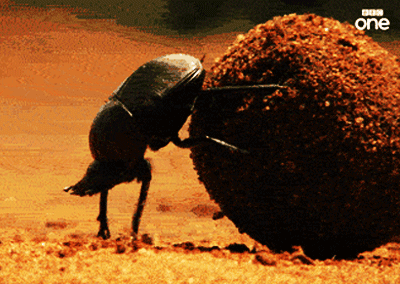
FEATURED: This ancient beetle is the first new species discovered in fossilized poop
• Museums are in a race against time to keep plastic art from falling apart
Could plastic-eating microbes take a bite out of the recycling problem?
• Massive DNA study finds rare gene variants that protect against obesity
Scientists quit journal board, protesting “grossly irresponsible” study claiming COVID-19 vaccines kill
• Can immune responses alone reveal which COVID-19 vaccines work best?
The Colorado River is shrinking. Hard choices lie ahead, this scientist warns
• A megaquake will someday strike the Pacific Northwest. This ship could figure out how bad it will be
Science AAAS

Bizarre News (we couldn’t make up stuff this good - real news story)
This french-fry-stealing seagull is the star of a new advertising campaign
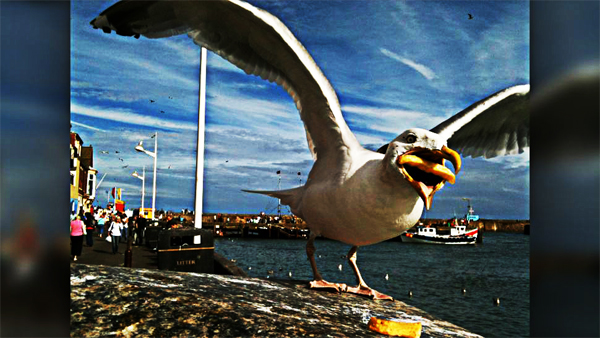
Herring gulls at the seashore are notorious for their food-snatching behavior.
An astonishing photograph captures the instant a seagull in the United Kingdom gaped its beak to snap up a french fry. The sight of a gull trying to nab human food is all too familiar to beachgoers, but hungry gulls usually move too quickly for people to catch them in the act. One moment, your french fries were right beside you. A second later, they're gone.
In this particular case, photographer Hannah Huxford encountered the fry-nabbing gull in Bridlington, a coastal town on the Yorkshire coast. Huxford snapped the well-timed photo on her iPhone in 2011; it went viral soon after. A decade later, the fry-stealing gull is appearing on billboards across the U.K. and Ireland, as part of an advertising campaign for Google, My Modern Met recently reported.
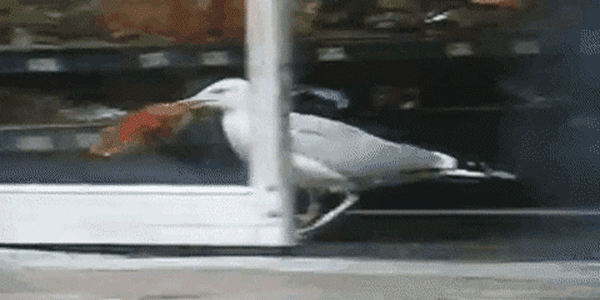
The “cheeky” herring gull (Larus argentatus) was bold and fearless as it approached Huxford in Bridlington, while her husband tossed fries (“chips”, in the U.K.) for the gull to catch, she wrote in a blog post in 2012.
“He was fascinating to watch and just wasn't scared of anyone, all he wanted was chips!” Huxford wrote. “I took many snaps of him on my iPhone 3G, it was only when I got back home to download the photographs that I found this amazing picture of him in mid gulp.”
Local and national media outlets, including the BBC, snapped up the story as quickly as the gull snatched the french fry. Eventually, the media frenzy died down, but the gull's brush with fame wasn't over just yet.
On March 22, Huxford posted on Instagram to commemorate the 10-year anniversary of the image, and a design firm promptly contacted her about licensing the photo, Huxford told My Modern Met.
Her picture of the gull - captioned “What are you searching for this summer?” - is now appearing on Google billboards for 30 days and in online advertising for the company for the next 12 months, the BBC reported.
Why are seagulls so interested in human treats like french fries? It's not just because they're plentiful and easy to steal. Researchers recently discovered that food may actually become more attractive to gulls when the birds observe humans handling it first, according to a 2020 study published in The Journal Royal Society Open Science.
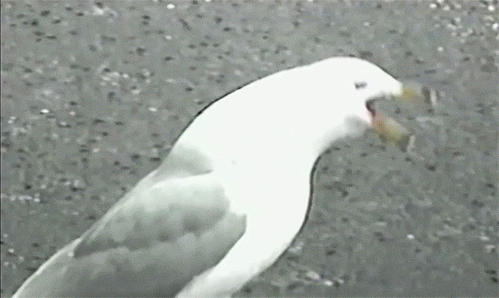
Gulls that live in urban environments associate humans with food - from the trash that people leave behind, and from food they consume outdoors. Observing humans as they eat signals to a gull that there's food available for the taking, and the food may be safer or more desirable than food that humans haven't touched, the study authors reported.
“Our findings suggest that gulls are more likely to approach food that they have seen people drop or put down, so they may associate areas where people are eating with an easy meal”, study co-author Laura Kelley, a biosciences research fellow at the University of Exeter in Cornwall, England, said in a statement.
Related:Beastly feasts: Amazing photos of animals and their prey
Live Science (06/30/2021) 


SONG FACTS
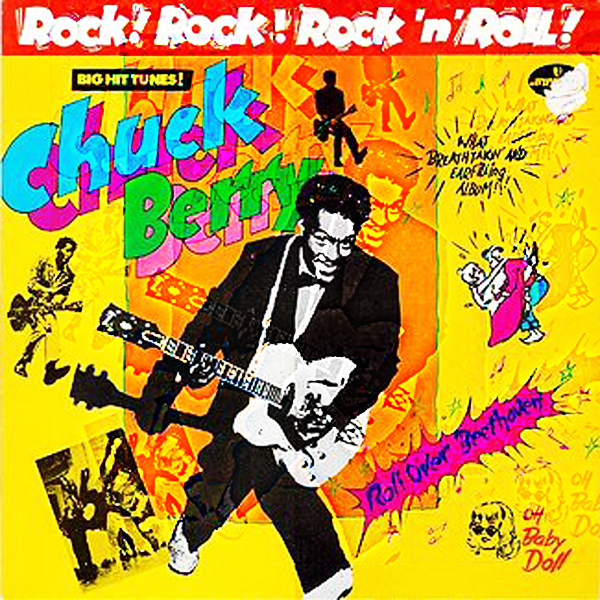
“Maybellene”  - Chuck Berry
- Chuck Berry
Album: Rock, Rock, Rock!
Released 1955 
“Maybellene”  evolved out of
“Ida Red”
evolved out of
“Ida Red”  , a hillbilly song by Bob Wills & The Texas Playboys from the early '50s. Berry heard that song on the Country radio station KMOX in St. Louis, but didn't know who recorded it.
, a hillbilly song by Bob Wills & The Texas Playboys from the early '50s. Berry heard that song on the Country radio station KMOX in St. Louis, but didn't know who recorded it.
Reworking the song into a tune he called
“Ida Red”  , Berry performed the song around St. Louis with his group, the Johnnie Johnson Trio.
, Berry performed the song around St. Louis with his group, the Johnnie Johnson Trio.
Berry had never recorded, but when he went to Chicago to see Muddy Waters perform, he stayed in town to pitch himself to Leonard Chess of Chess Records, who asked him to come back the next week with some original songs.
Berry returned with his bandmates Johnnie Johnson (piano) and Eddie Hardy (drums), and a demo reel with four songs, including “Ida Mae”. That's the one Leonard Chess liked best, but he asked Berry to change so there wouldn't be any confusion with "Ida Red" and to fend off any copyright claims. Berry changed the lyrics, turning it into a song about fast cars - one of his favorite topics. It was the first song the band recorded, and it proved a challenge: they recorded 36 takes.
This song tells the story of a girl who keeps cheating on her man. Various cars appear in the lyrics; Berry sings about chasing Maybellene in his V8 Ford while she drag races a man in a Cadillac with her Coupe de Ville.
There are a few different stories floating around about how the song got its name.
Berry has said that Maybellene was the name of a cow in child's nursery rhyme, but Johnnie Johnson recalled that there was a box of Maybellene mascara in the office, which gave Leonard Chess the idea for the title.
Chess Records gave the disc jockey Alan Freed a cowriting credit on this song (and also some cash) in exchange for playing it on the radio. Deals like this led to the Payola scandals, which led to rules prohibiting record companies from paying DJs to play their songs. Marshall Chess, the son of Chess founder Leonard Chess, recalled to The Independent newspaper May 27, 2008:
“He [Freed] played the hell out of Chuck's first record, ‘Maybellene’, because of that. My father says he made the deal, and by the time he got to Pittsburgh, which was half a day's drive away, my uncle back at home was screaming, ‘What's happening? We're getting all these calls for thousands of records!’”
Deals like this were perfectly legal and fairly common at the time, but when the government took action in 1959, Freed refused to admit to taking Payola, insisting he was acting as a consultant to the music industry. Holding steadfast to this position, the radio and TV stations he worked for fired him, and his career never recovered.
In contrast, Dick Clark admitted to taking cash and gifts, and simply stopped doing so when it was declared illegal. He was able to grow his media empire considerably after the scandal.
Berry was 29 years old when he recorded this song, but he knew that his audience was teenagers, so he wrote the song to appeal to that crowd - the ones fascinated with cars and experiencing young love. Berry also took care to sing it as clearly as possible so it would have more crossover appeal with a white audience. His strategy worked: the song went to #1 on the R&B chart and also made #5 on the Pop chart.
Chuck Berry was a rock and roll original, but he didn't consider this a rock song. Said Berry:
“‘Maybellene’ was very much a country song, with country lyrics. Maybe a little faster but basically it was country.”
Soon after this was released, Elvis Presley started performing it at some of his live appearances. Many other artists also recognized its propulsive appeal and covered the song.
British acts - notably The Beatles and The Rolling Stones - often recorded Berry's songs, but the UK act that grabbed this one was Gerry and the Pacemakers, who included it on their 1963 debut album “How Do You Like It?”
Other artists to cover the song include George Jones, The Searchers, Jerry Lee Lewis and Foghat.
The B-Side of the single was a slow blues song called
“Wee Wee Hours”  .
.
One-third of the composing credit went to Russ Fratto for the sole purpose of making sure that Berry got more royalties than Alan Freed (Fratto was a local DJ who was a close friend of Berry's). He agreed to give Berry his share. In those days, it was common to give Freed a composer credit in exchange for airplay on his show. Freed would get royalties, and the song would become a hit.
Later in 1955, Fats Domino released his own song with a three-syllable girl in the title:
“I Can't Go On (Rosalie)”  .
.
Berry died in 2017, the same year Fats Domino passed away. Jon Batiste and Gary Clark, Jr. paid tribute at the Grammy Awards in 2018 by performing
“Maybellene” and “Ain't That A Shame”  .
.
Chuck Berry as frightening bad boys, as opposed to the clean-cut Beatles. It was great marketing for the band, who got some press by implying an interest in the occult.
MORE SONGS

“Brown Eyed Handsome Man” (1956) 
“Roll Over Beethoven” (1956) 
“Too Much Monkey Business” (1956) 
“School Day (Ring Ring Goes The Bell)” (1957) 
“Reelin’ & Rockin’” (1957) 
“Rock & Roll Music” (1957) 
“Carol” (1958) 
“Johnny B. Goode” (1958) 
“Little Queenie” (1958) 
“Merry Christmas Baby” (1958) 
“Run Rudolph Run” (1958) 
“Sweet Little Sixteen” (1958) 
“Almost Grown” (1959) 
“Back in the U.S.A.” (1959) 
“Little Queenie” (1959) 
“Back in the U.S.A.” (1959) 
“Nadine (Is It You?)” (1964) 
“No Particular Place To Go” (1964) 
“Promised Land” (1964) 
“You Never Can Tell - C'est La Vie” (1964) 
“Big Boys” (1991) 
“Darlin'” (1991) 
“My Ding-a-Ling” (1972) 
Chuck Berry official site (Chuck Berry Discography) / Rock & Roll Hall of Fame / Billboard / All Music / Song Facts /
Ultimate Classic Rock / Chuck Berry
Image: “Rock, Rock, Rock! (album)” by Chuck Berry
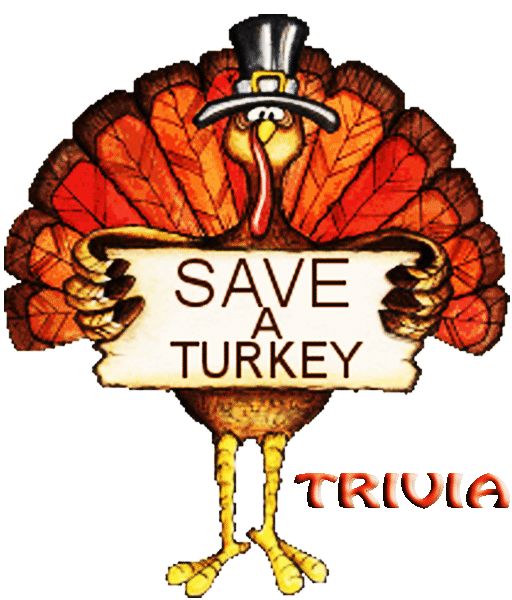
Trivia
● What year was the celebration that is most commonly considered to be the first Thanksgiving?
Answer to Trivia
● How long did the first Thanksgiving celebration last?
Answer to Trivia
● Under which president did Thanksgiving become an annual holiday?
Answer to Trivia
● In what decade did both the Macy’s Thanksgiving Day Parade and America’s Thanksgiving Parade start?
Answer to Trivia
● How do both Macy’s Thanksgiving Day Parade and America’s Thanksgiving Parade conclude?
Answer to Trivia
● Which president was the first to give a turkey a presidential pardon?
Answer to Trivia
Thanksgiving - Fact or Fiction
Fiction: In 1863, President Abraham Lincoln designated the last Thursday in November as a national day of thanksgiving. in 1939, after a request from the National Retail Dry Goods Association, President Franklin Roosevelt decreed that the holiday should always be celebrated on the fourth Thursday of the month (and never the occasional fifth, as occurred in 1939) in order to extend the holiday shopping season by a week.
Fact: In a letter to his daughter sent in 1784, Benjamin Franklin suggested that the wild turkey would be a more appropriate national symbol for the newly independent United States than the bald eagle (which had earlier been chosen by the Continental Congress). He argued that the turkey was “a much more respectable Bird”, “a true original Native of America”, and “though a little vain and silly, a Bird of Courage.»
Fiction: The Philadelphia department store Gimbel’s had sponsored a parade in 1920, but the Macy’s parade, launched four years later, soon became a Thanksgiving tradition and the standard kickoff to the holiday shopping season. The parade became ever more well-known after it featured prominently in the hit film Miracle on 34th Street (1947), which shows actual footage of the 1946 parade.
Fact: According to the Cape Cod Cranberry Growers’ Association, one of the country’s oldest farmers’ organizations, Native Americans used cranberries in a variety of foods, including “pemmican” (a nourishing, high-protein combination of crushed berries, dried deer meat and melted fat). They also used it as a medicine to treat arrow punctures and other wounds and as a dye for fabric. The Pilgrims adopted these uses for the fruit and gave it a name “craneberry” - because its drooping pink blossoms in the spring reminded them of a crane.
Fact: Turkey does contain the essential amino acid tryptophan, which is a natural sedative, but so do a lot of other foods, including chicken, beef, pork, beans and cheese. Though many people believe turkey’s tryptophan content is what makes many people feel sleepy after a big Thanksgiving meal, it is more likely the combination of fats and carbohydrates most people eat with the turkey, as well as the large amount of food (not to mention alcohol, in some cases) consumed, that makes most people feel like following their meal up with a nap.
Fiction (kind of): Domesticated turkeys (the type eaten on Thanksgiving) cannot fly, and their pace is limited to a slow walk. Female domestic turkeys, which are typically smaller and lighter than males, can move somewhat faster. Wild turkeys, on the other hand, are much smaller and more agile. They can reach speeds of up to 20-25 miles per hour on the ground and fly for short distances at speeds approaching 55 miles per hour. They also have better eyesight and hearing than their domestic counterparts.
Fact: The turkey trot, modeled on that bird’s characteristic short, jerky steps, was one of a number of popular dance styles that emerged during the late 19th and early 20th century in the United States. The two-step, a simple dance that required little to no instruction, was quickly followed by such dances as the one-step, the turkey trot, the fox trot and the bunny hug, which could all be performed to the ragtime and jazz music popular at the time.
Fiction: The American tradition of college football on Thanksgiving is pretty much as old as the sport itself. The newly formed American Intercollegiate Football Association held its first championship game on Thanksgiving Day in 1876. At the time, the sport resembled something between rugby and what we think of as football today.

A Test for People Who Know Everything
From the Jeopardy Archives Category - “BIG BODIES OF WATER” ($200)
“Approximately 60 million square miles: this largest ocean.”
Answer to Jeopardy READ MORE: Wikipedia
From the Jeopardy Archives Category - “BIG BODIES OF WATER” ($400)
“More than 950,000 square miles: this sea that touches Africa & Asia, among others.”
Answer to Jeopardy READ MORE: Wikipedia
From the Jeopardy Archives Category - “BIG BODIES OF WATER” ($600)
“5.4 million square miles: this ocean that touches the U.S., Canada & Russia, among others.”
Answer to Jeopardy READ MORE: Wikipedia
From the Jeopardy Archives Category - “BIG BODIES OF WATER” ($800)
“About 378,000 square miles: also called the East Sea, it borders Sakhalin Island.”
Answer to Jeopardy READ MORE: Wikipedia
From the Jeopardy Archives Category - “BIG BODIES OF WATER” ($1,000)
“Around 900,000 square miles: this sea that touches North America & Asia.”
Answer to Jeopardy READ MORE: Wikipedia
Joke of the Day

“Drunk At Bar”
Comes Home
A guy comes home completely drunk one night.
He lurches through the door and is met by his scowling wife, who is most definitely not happy.
“Where the hell have you been all night?” she demands.
He says, “At this new bar
The Golden Saloon.
Everything there is golden.
It's got huge golden doors, a golden floor and even the urinal's gold!”
The wife still doesn't believe his story, and the next day checks the phone book, finding a place across town called the Golden Saloon.
She calls up the place to check her husband's story.
“Is this the Golden Saloon?” she asks when the bartender answers the phone.
“Yes it is”, bartender answers.
She asks, “Do you have huge golden doors?”
Bartender answers, “Sure do.”
She asks, “Do you have golden floors?”
Bartender answers, “Most certainly do.”
She asks, “What about golden urinals?”
There's a long pause, then the woman hears the bartender yelling,
“Hey, Duke, I think I got a lead on the guy that pissed in your saxophone last night!”



































